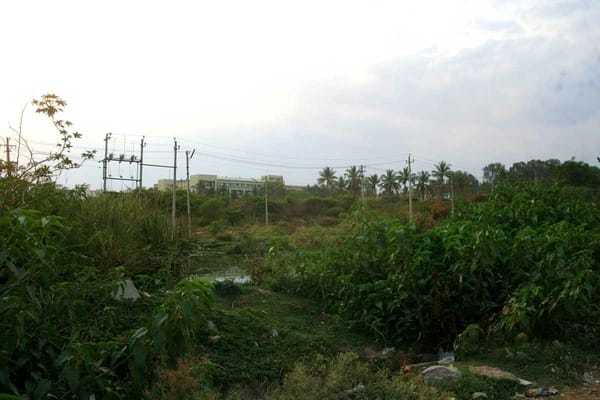Most of the lakes in Bangalore have vanished due to encroachment or construction activity. Arakere lake, one of Bengaluru’s biggest lakes may become a thing of past which has almost dried up due to negligence and is totally overrun by weed.

Arakere lake’s current state. Pic: Anuradha Janga
Arekere lake may disappear if nothing is done immediately. Hence four residents in the vicinity have formed a trust – ‘Arakere Neighbourhood Improvement Trust’ (ANIT) to spread awareness and engage the residents in rejuvenating Arakere lake. The trust was registered on June 30th, 2012.
“We formed the group keeping in mind two purposes – to communicate with BDA and legitimise the face that we provide to the public”, says Arbind Gupta, 55, one of the trustee members. The trust is hoping to get the lake restoration plan from BDA soon. “A BDA official told that the lake restoration plan has been submitted to LDA (Lake Development Authority)”, he adds.
The BBMP website states that the Arakere lake area is about 11 hectares (bigger than Sankey Tank). BDA’s estimate of the lake perimeter is approximately 3km. BDA has started on the boundary fencing on the Arakere and Bannerghatta Road side. Work on dealing with encroachments, fencing, desilting, diverting sewage and linking it with upward and downward water flow system is yet to be done.
“We want more residents to join our efforts, all it requires is little time and a bit of effort”, Gupta says. The trust had organised an awareness campaign in Sai Baba Temple premises in the locality a while back and hopes to do more campaigns in the immediate neighbourhood of the lake such as Vysya Bank Colony etc,. Those interested can either join their Facebook page "Save Arakere Lake" or contact Arbind Gupta – 9845193233